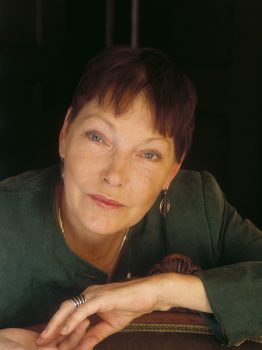Soulscapes
Issue 2/1987 | Archives online, Authors, Reviews

Raija Siekkinen. Photo: Irmeli Jung
When the first collection of short stories by Raija Siekkinen (born 1953), entitled Talven tulo (‘The coming of winter’, 1978) appeared, the critics were unanimous on one point: here was a mature writer with an original, individual voice. For her second collection, Tuomitut (‘The condemned’, 1982), Raija Siekkinen received the coveted Kalevi Jäntti Prize. Since then she has remained faithful to the short story. And since the publication of her fourth collection, Pieni valhe (‘A small lie’), the reader has been able to trace a development in which she has polished and tightened her narrative and brought to it more and more poetic and symbolic elements.
The main character in Raija Siekkinen’s short stories is generally a woman, not old but not very young either, often alone, sometimes broken by illness. Death is a recurring theme with Siekkinen; illness withers her women, her men die sometimes by their own hand. Siekkinen writes seldom about children; when she does so, it is from a child’s point of view. This perspective results in a critique of the narrow and restricted world view of adults. But always sensitively, never pointing the finger.
In Siekkinen’s short stories personal relationships are not in order. Even within marriage, the woman often seeks solitude, on an island, at the summer house, in a strange town, takes time to ponder why life has become what it is. There is little dialogue; instead, dreams and memories play a large role. Memories are often awakened by ordinary and seemingly unimportant events and objects, which take on a symbolic meaning.
One example of this kind of shift in meaning occurs in the masterly little short story Jäät liikkuvat (‘The ice moves’) from Elämän keskipiste (‘The centre point of life’, 1983). It starts thus: ‘One day the flat’s floor was full of glass.’ One of the few, recurrent, spoken words in the story is the husband’s anxious ‘Sorry’. The splinters of glass awaken painful associations in the wife: it is as if someone wants to break the glass that is herself, she thinks. Siekkinen finally gives her a line, too: ‘I want to split up.’ The decision has matured after a walk – it is frosty, and she notices that her feet have made no impressions in the sand. The man’s common-sense explanation is that the ground is frosty. But for the woman, as for many of the women Siekkinen describes, this detail becomes a pointer to something far bigger, a human relationship that has frozen to the ground and must be broken like glass.
Footprints in the sand are an image that recurs in Siekkinen’s short stories. The question of whether or not someone leaves footprints is on the one hand a way of measuring the passage of time, the changing of the seasons and on the other an indication of the individual’s attitude to herself. Footprints are proof of existence. Siekkinen’s characters are constantly threatened by alienation, not only from other people but from themselves.
Objects, nature, tell the characters in the stories more than do other people. When something unpleasant happens, Siekkinen does not describe her character’s reactions, but directs their gaze out over the landscape, out of the window, or inwards, to memories or dreams. When people communicate verbally, it is often negative. In one of the stories a dying mother leaves her daughter the following testament: ‘Do not ever trust anyone. Never: promise.’ Adults direct their failures at their children, dead or crippled relationships are handed down from generation to generation. Rarely do the stories end on a positive note or philosophy of life.
All the same, Raija Siekkinen’s stories are not depressing. They have space and room to breathe, they encourage the reader to make his own associations and interpretations, to function inspirationally.
Siekkinen’s style has changed with the years. In later volumes, especially this latest, dreams and memories, expressive and symbolic elements, are gaining ground. Her narrative no longer progresses in linear fashion, with stories with a beginning and an end; rather, they are highly charged soulscapes with a strong atmosphere and many complex layers.
Translated by Hildi Hawkins
Tags: classics, short story
No comments for this entry yet
Leave a comment
Also by Marianne Bargum
Island epic - 31 March 1990
The art of travelling light - 30 September 1988
-
About the writer
Retired from the post as the CEO of the Söderströms publishing company in 2007, Marianne Bargum (born 1945) is currently the Vice President of the Finnish PEN. She worked as a project manager at the Finnish Literature Information Centre (now FILI – Finnish Literature Exchange) from 1980 to 1991. Bargum, with her author husband Johan Bargum, lives in Espoo.
© Writers and translators. Anyone wishing to make use of material published on this website should apply to the Editors.
